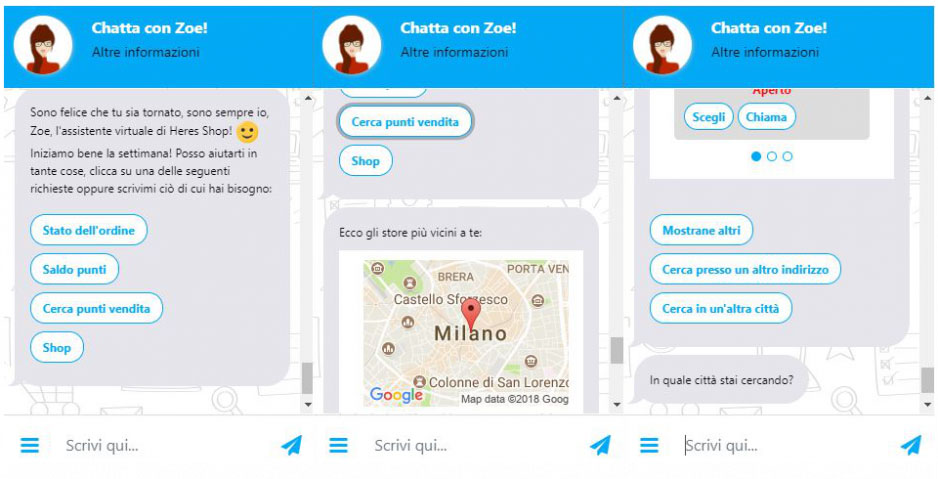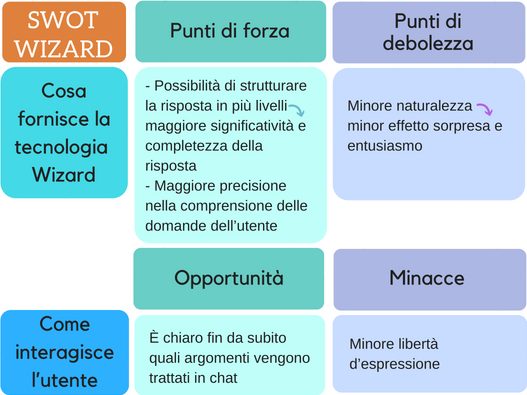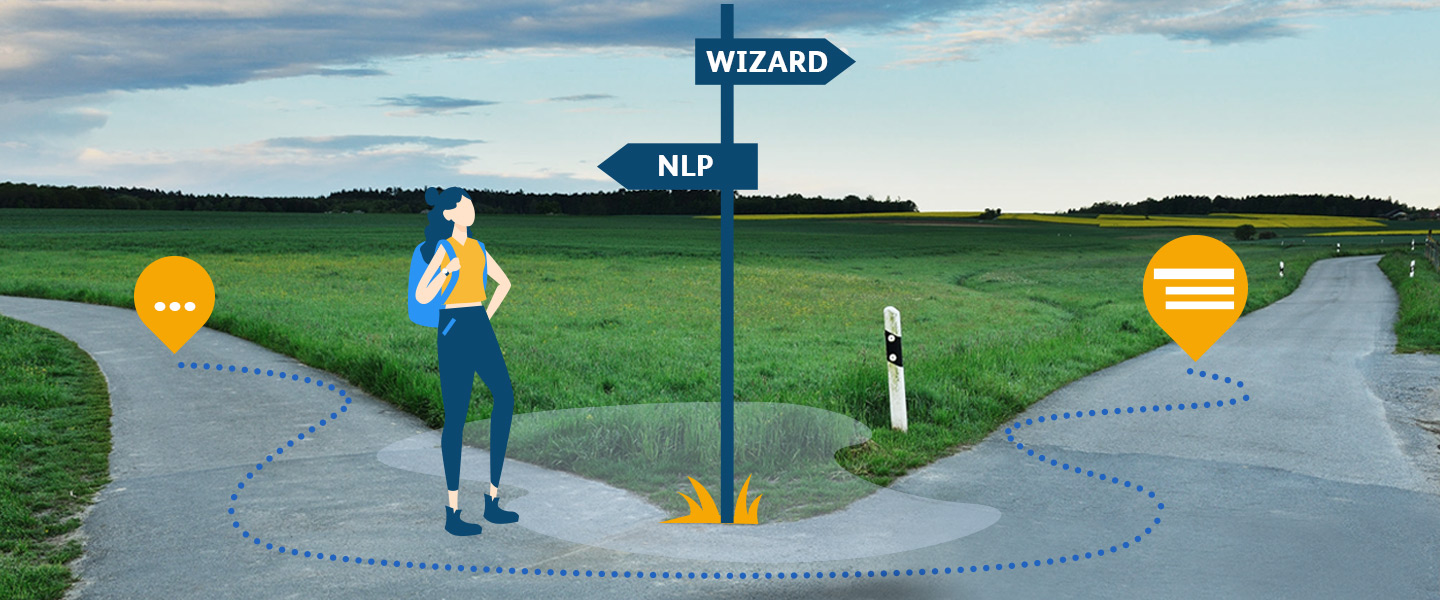NLP approach or Wizard mode? Free questions or guided conversational paths? What is the best technology to invest in to give chatbots that extra oomph?
While the digital world seems to agree chatbots are products destined to revolutionize the brand-consumer interaction, opinions are still divided on which technology provides the most surprising results in this revolution.
Let’s make things clear about the two most used conversation modes at the moment: we’ll underline the strengths and weaknesses that we spotted here in Heres, based on our own experience.
NLP: free questions between enthusiasm and risks
The NLP approach allows users to ask any question and is focused on understanding what they are writing.
NLP (Natural Language Processing) is the branch of Computational Linguistics that looks for solutions to allow humans and machines interact using natural language.

As it’s easy to imagine, a system based on this technology creates surprise and enthusiasm in the users. At the same time, though, there’s a large risk of misunderstanding what the users wrote in the chat and the answer content, therefore, can only be partially satisfying, since the needs of the writer can be different from what the conversation interface actually understands. Moreover, it may not be clear enough what kind of questions the chatbot is able to answer: the user may ask questions outside the domain and maybe ask nothing at all about the expected topics.
In the following table we summarized everything in a SWOT analysis to highlight strengths, weaknesses, opportunities and threats of the NLP approach.

Wizard: guiding the user to a meaningful answer
The wizard mode is an alternative solution that provides for the NLP’s limits, giving the chatbot the task of guiding the user in a conversation path that is planned on a careful domain analysis and a precise forecast of the user’s needs.
As an example, here’s a conversation path where we suggest the most popular topics and after the user clicks on “Cerca punti vendita” (look for shops) we go further, providing the closest shops to the user and then suggesting further search criteria.

If on one side their freedom is limited, on the other the users are still determining the direction of the conversation by clicking on the option that better interprets their needs among the ones suggested by the chatbot. The ability of understanding the customers’ intentions is therefore more precise and the answer provided by the chatbot is much more meaningful. That’s because, according to the needs expressed by the user, it’s possible to gradually deepen the topic, one level after the other.

Heres’ hybrid approach as the optimal solution
At the moment, both approaches have pros and cons and give priority to different necessities. Neither of them, though, stands out compared to the other for its effectiveness or capability of totally satisfying the needs of the chatbot’s final users.
Working with a “user first” perspective, our goal is to offer the best possible UX. This is why in Heres we decided to use a hybrid approach for our chatbots, choosing flexible solutions that can adapt to different domains and clients. In our chatbots, the users start from a conversation path tailored for them, which they can leave in any moment by typing questions according to their interests. Finally, thanks to this approach the user can choose to text or to talk, communicating with the bot through voice messages.

This hybrid solution provides the ability to limit the misunderstandings of the NLP and to play with the Wizard in order to entertain the users and guide them to meaningful, complete content, without limiting their freedom of expression nor the enthusiasm created by natural dialogue with a chatbot.
Here’s a recap to quickly express the pros and cons that have emerged from the direct comparison of the two approaches.

Let's talk about your project
Together we will find the solution most suited to your needs.


